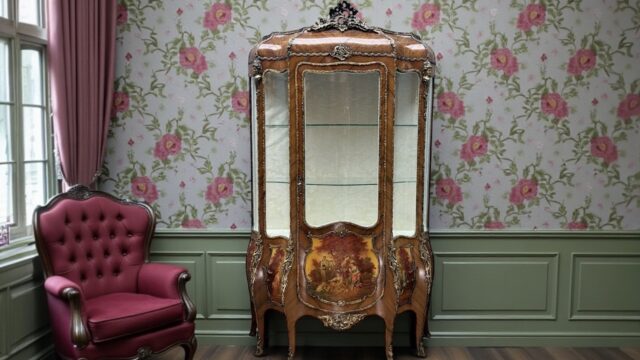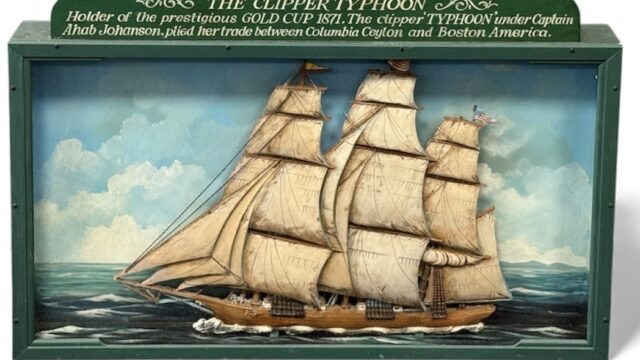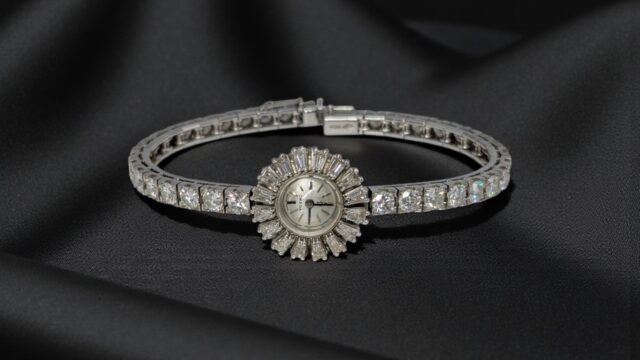Fine drawing, significant spacing, and simple, rigid design
Artists at Gregynog Press
Philanthropists and patrons of the arts, Gwendoline and Margaret Davies of Gregynog had great wealth and a social conscience. In 1923, they established the Gregynog Press as part of a wider initiative to nurture interest in the arts in Wales in the aftermath of the Great War. Their ambition was for Gregynog Hall to become a rural centre for the arts to benefit those affected by war.
Artist-engravers and designers, typographers, printers and bookbinders lived and worked together at Gregynog, employing traditional techniques to create limited-edition hand-made books. During its first decade, Gregynog established a reputation as one of the world’s finest private presses.
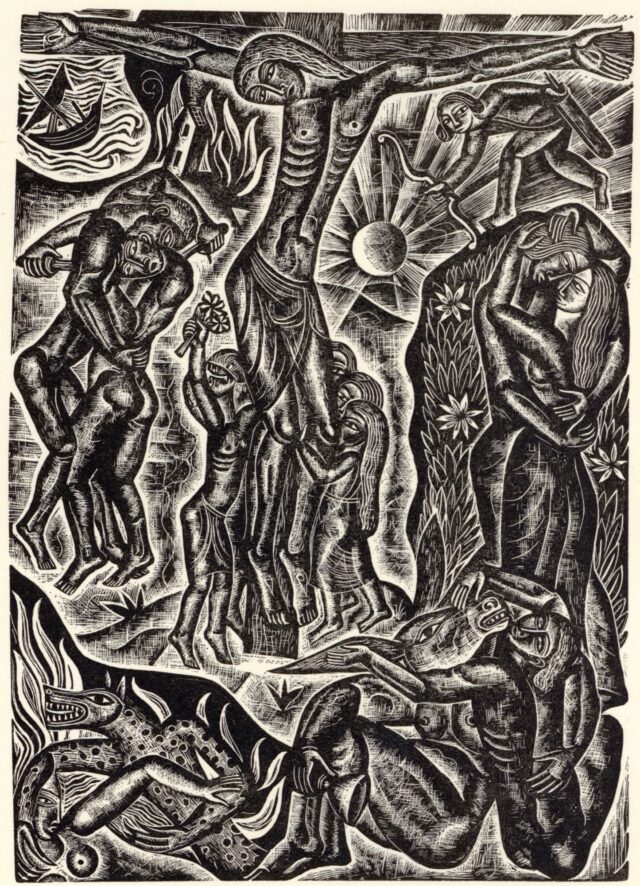
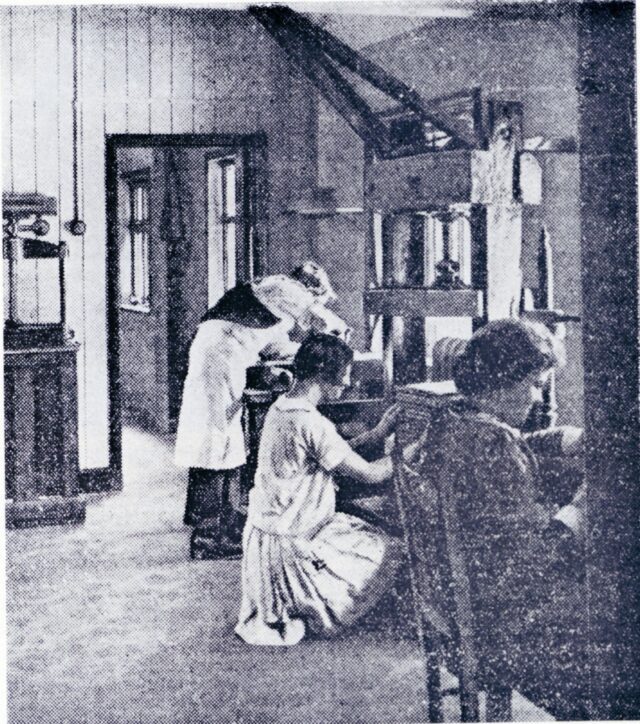
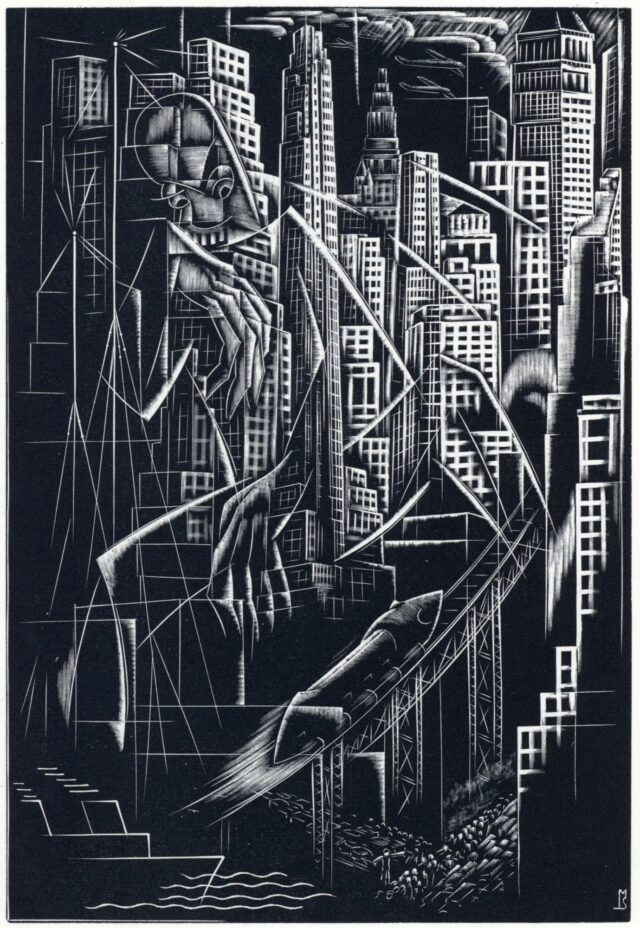
Philanthropists and patrons of the arts, Gwendoline and Margaret Davies of Gregynog had great wealth and a social conscience. In 1923, they established the Gregynog Press as part of a wider initiative to nurture interest in the arts in Wales in the aftermath of the Great War. Their ambition was for Gregynog Hall to become a rural centre for the arts to benefit those affected by war.
Artist-engravers and designers, typographers, printers and bookbinders lived and worked together at Gregynog, employing traditional techniques to create limited-edition hand-made books. During its first decade, Gregynog established a reputation as one of the world’s finest private presses.
Gwendoline Davies’ closest friend and advisor was Dr Thomas Jones of Rhymney (‘TJ,’ as he was affectionately known). A senior public servant, TJ was well connected in Wales and beyond. Though he was behind much of the sisters’ philanthropy and activities at Gregynog, it was Hugh Blaker, brother of the sisters’ former governess Jane Blaker, and advisor to the sisters in the formation of their internationally renowned collection of paintings and sculpture, who recommended that his protégé Robert Ashwin Maynard be appointed first Artistic Director of the so-called Arts and Crafts Department at Gregynog.
In fact, Maynard knew nothing of the crafts. He was selling cattle medicine in Shrewsbury at the time. At the Davies sisters’ expense, Maynard was sent to Central School of Arts and Crafts in London. While he tried his hand at several crafts, he was most interested in printing and book production. In a 1922 letter to Blaker, Maynard enclosed his ‘first woodcuts printed at the School.’ He advocated a ‘simple, rigid design, relying on fine drawing and significant spacing.’ This marks the genesis of the Gregynog Press.
Many students of the creative engraving classes at Central found an outlet for their work in the private presses that flourished in Britain during the 1920s and 30s. The twentieth-century private presses were a legacy of the Arts and Crafts Movement. They grew out of a belief that technology and mass production had destroyed craft, led to a decline in standards, and resulted in loss of the personal fulfilment and community function of meaningful work.
By July 1922, Maynard had relocated to Gregynog where he set up a composing room and print workshop in the courtyard. Over the next ten years, Gregynog would become the most self-sufficient of private presses; every stage in the manufacture of a book, except papermaking, was undertaken inhouse.
The first book was not published until December 1923. The Poems of George Herbert is a simple volume of devotional verse with a wood-engraved frontispiece and initial letters by Maynard. The more richly illustrated Poems by Henry Vaughan followed in December 1924.
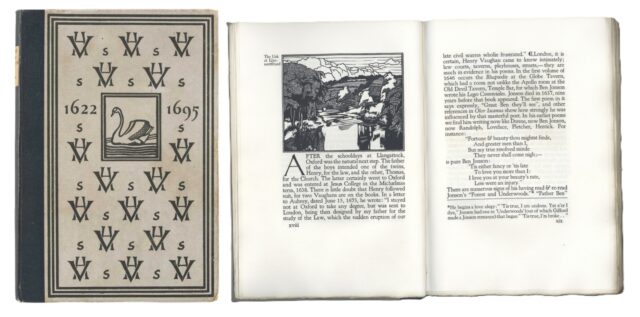
Maynard was now assisted by master printer John Henry Mason, who had taught him at Central. The wood engravings are by Maynard and Horace Walter Bray who joined the team in 1924 as Press Artist. The medium suited the clarity and simplicity of Maynard’s draughtsmanship, enabling him to achieve dramatic contrasts of light and shade.
By 1924, Press business was formalised. A Board of Directors was established: Gwendoline and Margaret Davies, TJ, and Ernest Rhys as literary editor. Rhys was author as well as founder and editor of J. M. Dents’ Everyman’s Library series of affordable classics. Gregynog Press aimed to publish Welsh works in translation; works in English by Welsh writers; and fine editions of texts in Welsh. The Press also produced ephemera: illustrated Christmas cards, concert programmes, addresses for the Welsh Council for the League of Nations, as well as programmes for concerts, conferences and religious services held at Gregynog.
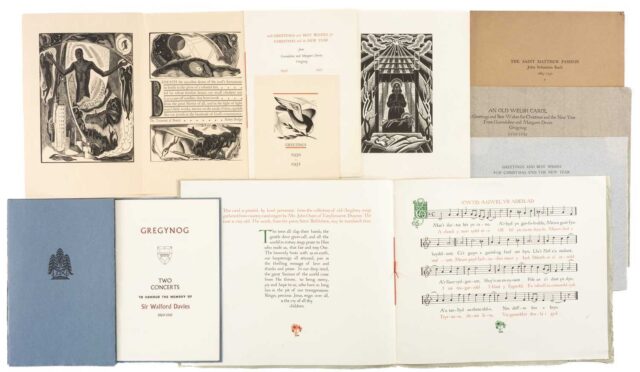
At its peak, the Press employed seventeen staff, most of whom were local to Gregynog. George Fisher was appointed binder in 1925. Widely regarded now as one of the greatest bookbinders of the twentieth century, Fisher was responsible for the exquisite gold-tooled full-leather specials that distinguish Gregynog Press outputs.
Maynard’s most ambitious project was The Celebrated Romance of the Stealing of the Mare, a medieval Islamic love story. The full-page frontispiece and decorated initials were designed and engraved by Maynard, watercoloured by hand and embellished with gold leaf.
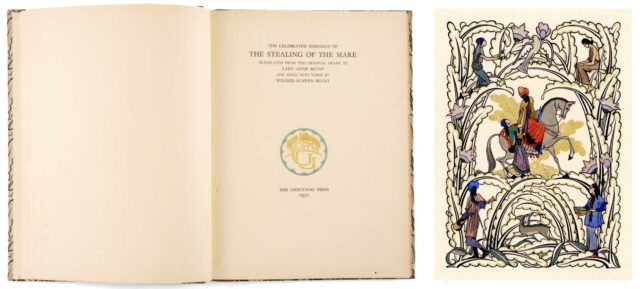
Maynard and Bray left the Press in February 1930, as Blaker puts it, ‘in a huff.’ Their two-volume Plays of Euripides, richly illustrated with wood-engraved illustrations after Greek vase paintings, was published in 1931.
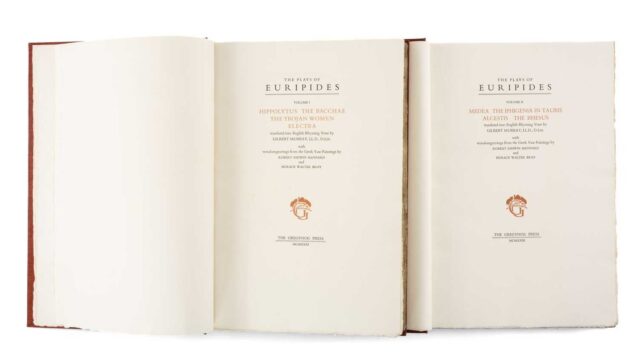
TJ insisted that a Welshman be appointed as replacement Controller, but the other Directors fought to engage the best artist for the job. Blaker argued that artists, rather than craftsmen-printers, should be at the helm. They would bring a freshness to the book designs, unlike the trained pressmen, typographers and printers who tended to conform to tradition. On Blaker’s recommendation, Blair Hughes-Stanton was invited to succeed Maynard.
An established wood-engraver, Hughes-Stanton declined the managerial role, proposing instead that he become Press Artist, with Scottish painter-sculptor William McCance serving as Controller. In 1930, Hughes-Stanton and McCance moved to Gregynog with their wives Gertrude Hermes and Agnes Miller Parker. Both women had trained in printmaking at Central and were at the vanguard of wood engraving in Britain.
The books produced during the tenure of Hughes-Stanton and McCance, such as The Revelations of St John the Divine and XXI Welsh Gypsy Folk-Tales, were acclaimed internationally for their modernist design, the virtuosity of the engravings, unsurpassed printing, and innovative special bindings.
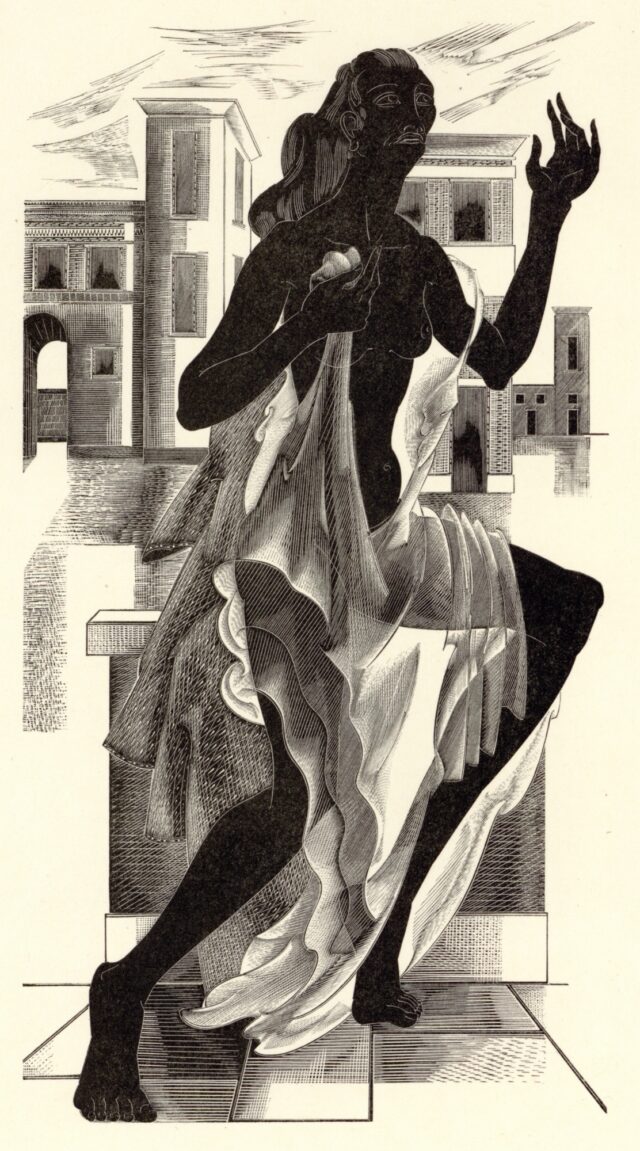
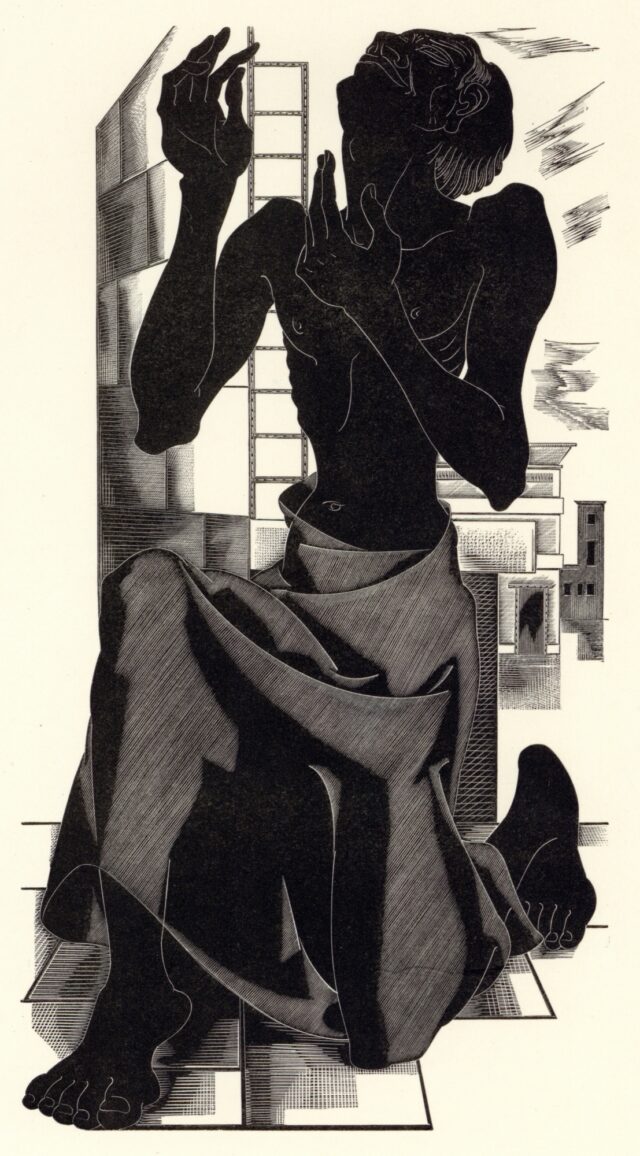
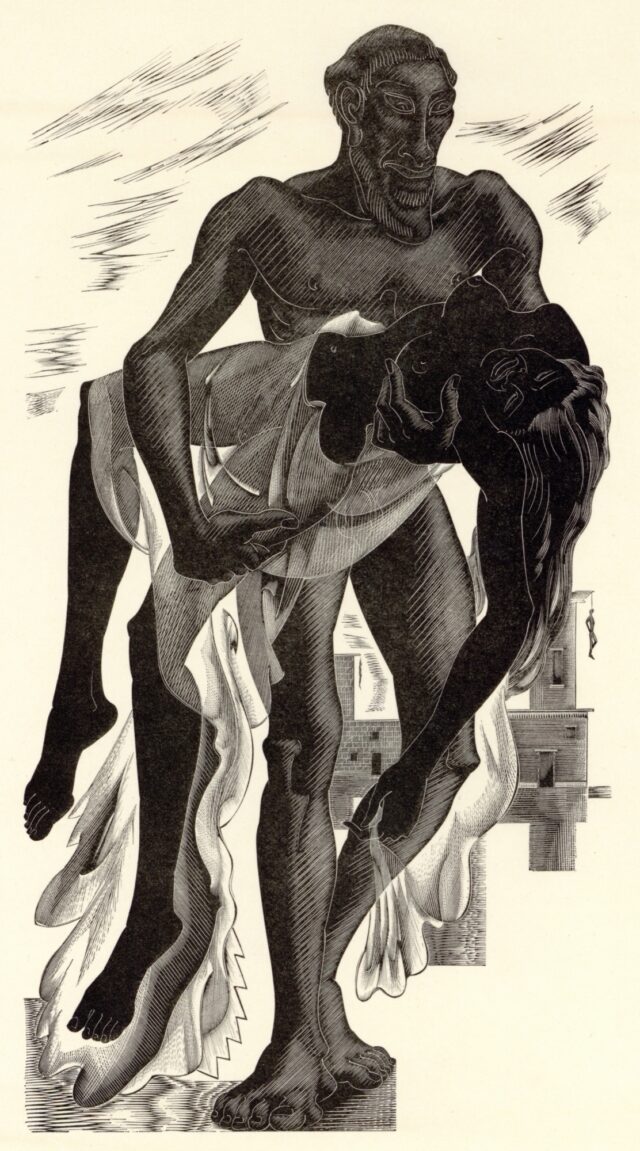
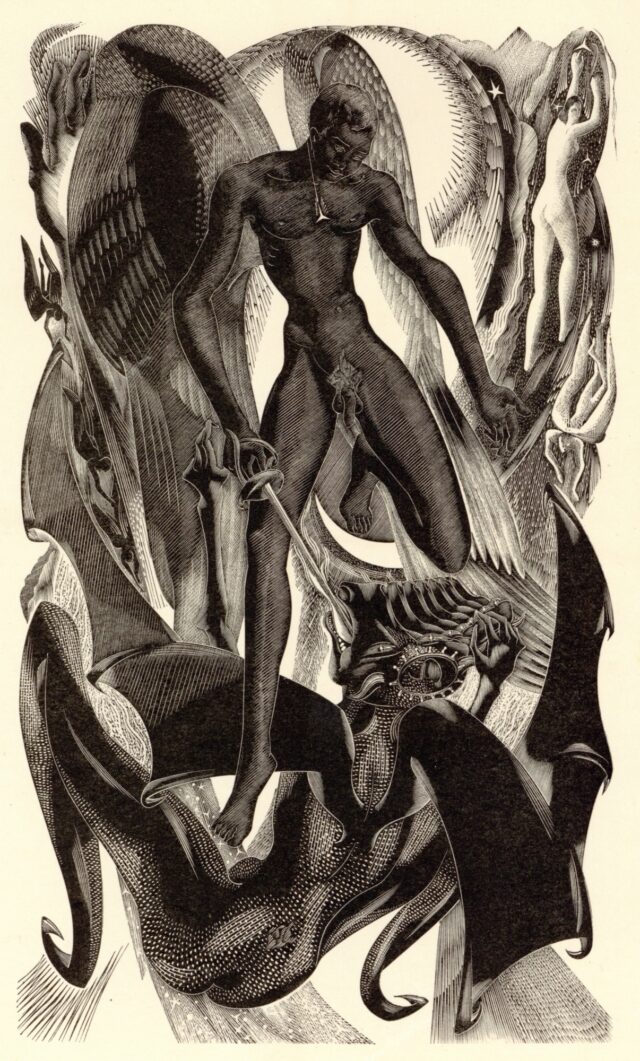
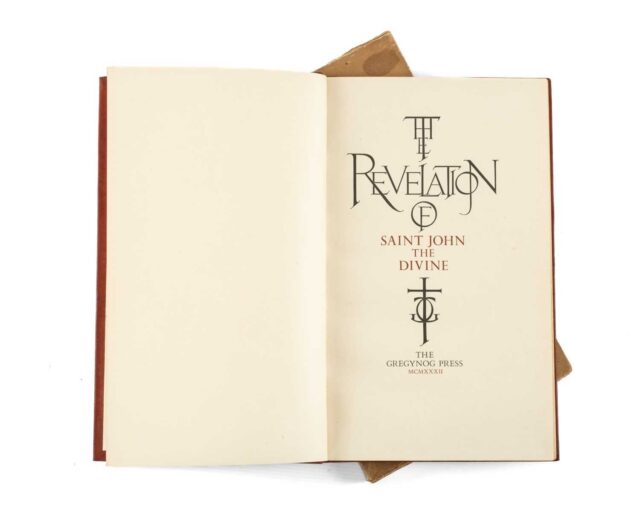
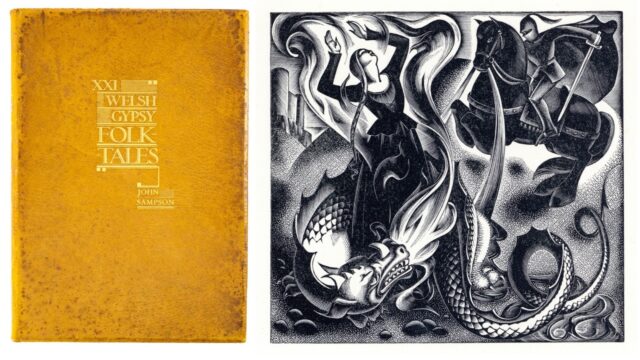
For Hughes-Stanton, letterforms had the same aesthetic attraction and design potential as the images. Revelations, in particular, exemplifies his positive interaction between image and text. Herbert John Hodgson, who joined the staff in 1927, is credited with the outstanding quality of the printing of the finely-wrought engravings.
Hughes-Stanton’s scantily clad or naked figures troubled Gwendoline Davies’s Calvinistic Methodist sensibilities. ‘How ever will we woo Mr Hughes Stanton from his delectable young ladies?’ she wrote to TJ. Blaker too regretted that Hughes-Stanton had gone ‘into harness with the firm determination to cut in wood sexual organs in his illustrations.’ Like ‘sex obsessed’ Eric Gill—whom Blaker deemed to be ‘so full of Faith, so full of filth’—he thought Stanton was ‘supreme in technique, extreme in message.’
Hermes and her children left Gregynog in 1933 following her husband’s affairs with women in the village. She had designed and engraved blocks for two books, but her departure meant the projects were never realised. Gwasg Gregynog, however, borrowed from the National Library of Wales her boxwood blocks for Gilbert White’s Natural History and Antiquities of Selborne and W. H. Davies’ The Lover’s Song-book and published them in 1988 and 1993 respectively.
Lot 20
Gwasg Gregynog: 'Wood Engravings by Gertrude Hermes being illustrations to Selborne'
£100-150
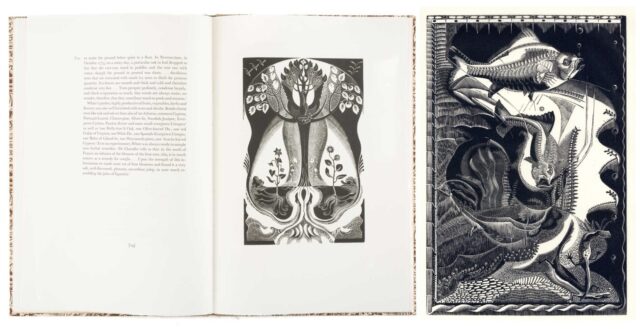
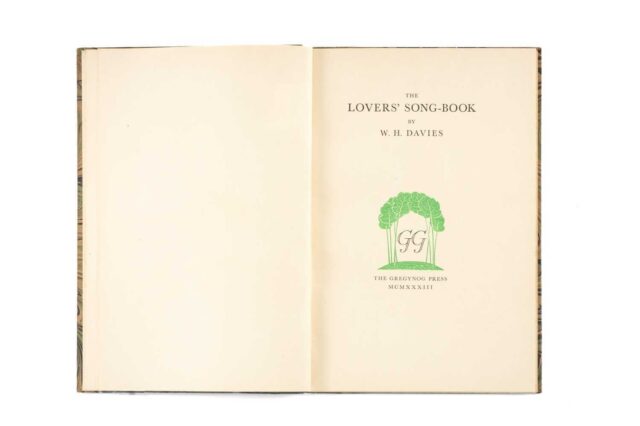
Agnes Miller Parker’s imaginative compositions are distinctive in their stylisation and meticulous in the fineness of her free-flowing lines. She was originally contracted for one year with a retaining fee of £100. Hughes-Stanton set the fees for the woodblocks according to size. But he was a fast engraver and Parker felt disadvantaged engraving 37 blocks for her 1932 volume Fables of Esope. When her contract expired, she was taken on as freelance to work on XXI Welsh Gypsy Folk Tales.
When Gwendoline Davies admonished Parker—telling her it had been a ‘discourtesy’ to illustrate Rhys Davies’s Daisy Matthews for the Golden Cockerel Press while contracted freelance to Gregynog—she tendered her resignation. Meanwhile, relationships between Hughes-Stanton and McCance had become strained. Gregynog was evidently too isolated and suffocating for artistic endeavour. Building a contented community was ever thwarted by shenanigans, suspicions, parochial attitudes, and petty jealousies.
After Hughes-Stanton’s and McCance’s contracts terminated in 1933, there were no resident Controllers or Press Artists at Gregynog. Lloyd Haberley, a young American who chose to work from Oxford, joined as part-time Controller. Consequently, there was little supervision of staff, and this led to delays during his short tenure. He was succeeded by James Walthrop who worked in the manuscript department of the British Museum. He was neither artist nor printer. Haberley and Walthrop mostly commissioned artists such as Stefan Mrozewski to illustrate The Romance of Parzival and the Holy Grail and Helen Waddell’s poem New York City, and John Farleigh for the engraved frontispiece and Paul Nash for binding design of Shaw Gives Himself Away. Most books produced at Gregynog after 1933 were sparsely decorated. Though exquisite in presswork and binding, they lack the ingenuity and typographic sensitivity of earlier publications.
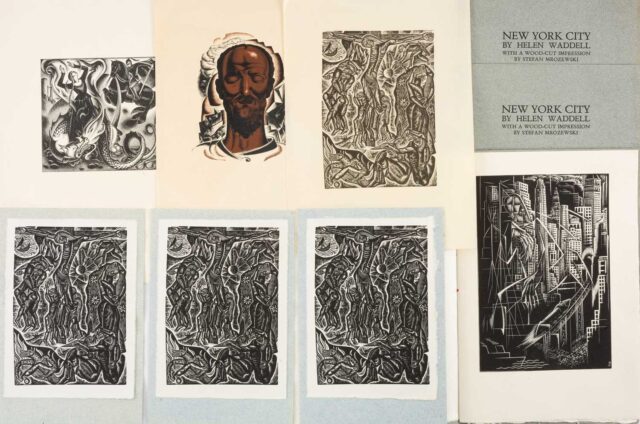
Gradually staff drifted away and the Press wound up. The forty-second and last book—Lyrics and Unfinished Poems by Lascelles Abercrombie—was published in August 1940. ‘It won’t be possible to open the Press ever again,’ Gwendoline wrote to TJ. ‘The First War knocked my life and health to pieces. It had to be rebuilt. And you were the builder and restorer. […] All I’ve been able to do during the last thirty years has been almost entirely your doing.’
The company did not enter voluntary liquidation until 1965, by which time Gregynog Hall had passed from Margaret Davies to the University of Wales. Presses, paper and type continued to gather dust until the University funded the year-long appointment of a Printing Fellow who was charged to produce a book. During 1975-76, Michael Hutchins of Camberwell School of Arts and Crafts designed and printed R. S. Thomas’s Laboratories of the Spirit on a small Albion handpress.
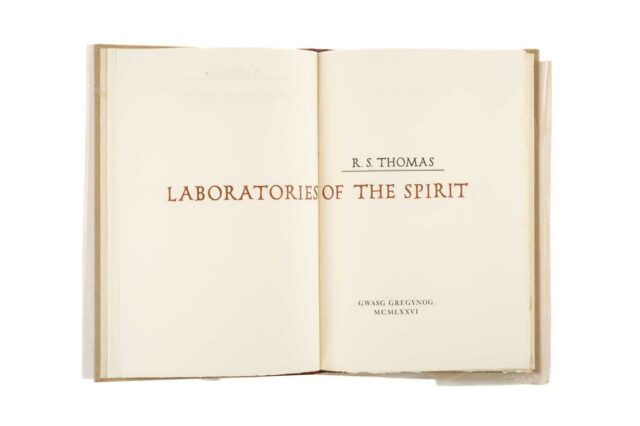
Building on the book’s success, the Arts Council for Wales supported the newly-formed Gwasg Gregynog with annual grants from 1977 to 1998. Head of Birmingham School of Printing Eric Gee was appointed Controller and David Vickers (Gwasg Gregynog’s last Controller) as compositor/printer. The production of limited-edition books continued much as it did during the inter-war years, though there were no resident artists or inhouse binders until the appointment of Alan Wood in 1990. Gwasg Gregynog commissioned its illustrators, binders and occasionally designers.
Gee retired in 1985 and was succeeded by David Esslemont, a protégé of Hughes-Stanton at Central in the 1970s. He remained in post until 1998 when Arts Council funding ceased. David Vickers was appointed Controller. Preserving the highest standards of production, Vickers worked closely with Kyffin Williams on Cutting Images, Colin See-Payton on Of a Feather, and Rigby Graham on Pennant and his Welsh Landscapes.
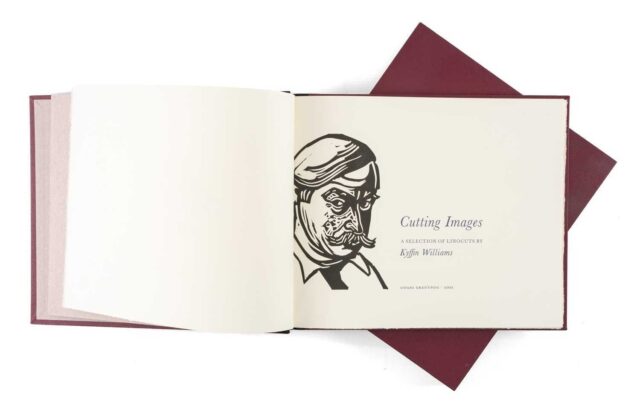
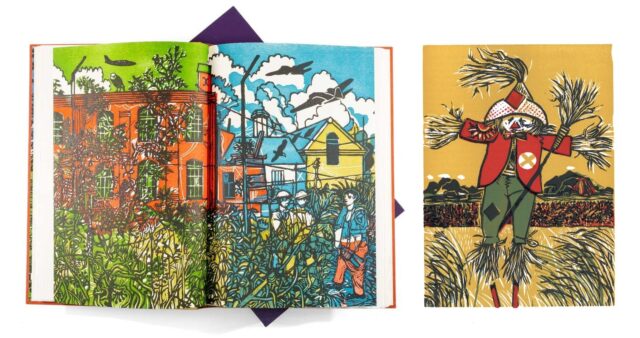
Each private press has its own design characteristics, historical references, and typographic peculiarities. Gregynog Press / Gwasg Gregynog achieved unity and harmony of design, materials and construction by ensuring papers, inks, typefaces, illustrations, decoration and bindings were chosen according to the demands of the text. There is no better way to understand this than to visit Gregynog to handle the books at Rogers Jones’ viewing, and to see, feel and smell for yourself what makes Gregynog books so special.
Robert Meyrick
Art historian, Gregynog Trustee, served on the Editorial Board of Gwasg Gregynog 1998-2016, designed The Twelve (2000) and Pennant and his Welsh Landscapes (2006)
For its 2025 Summer Welsh Sale at Gregynog Hall, Rogers Jones has assembled a large and representative corpus of books as well as printed ephemera from both Gregynog Press (1923-1940) and its successor Gwasg Gregynog (1975-2016). The majority are from the collections of the late Warwick Brown, former proprietor of Galloway Booksellers, Aberystwyth; Professors Hazel and Walford Davies, also of Aberystwyth; and Dr Glyn Tegai Hughes (1923-2017), scholar and the University of Wales’ first Warden of Gregynog Hall.


